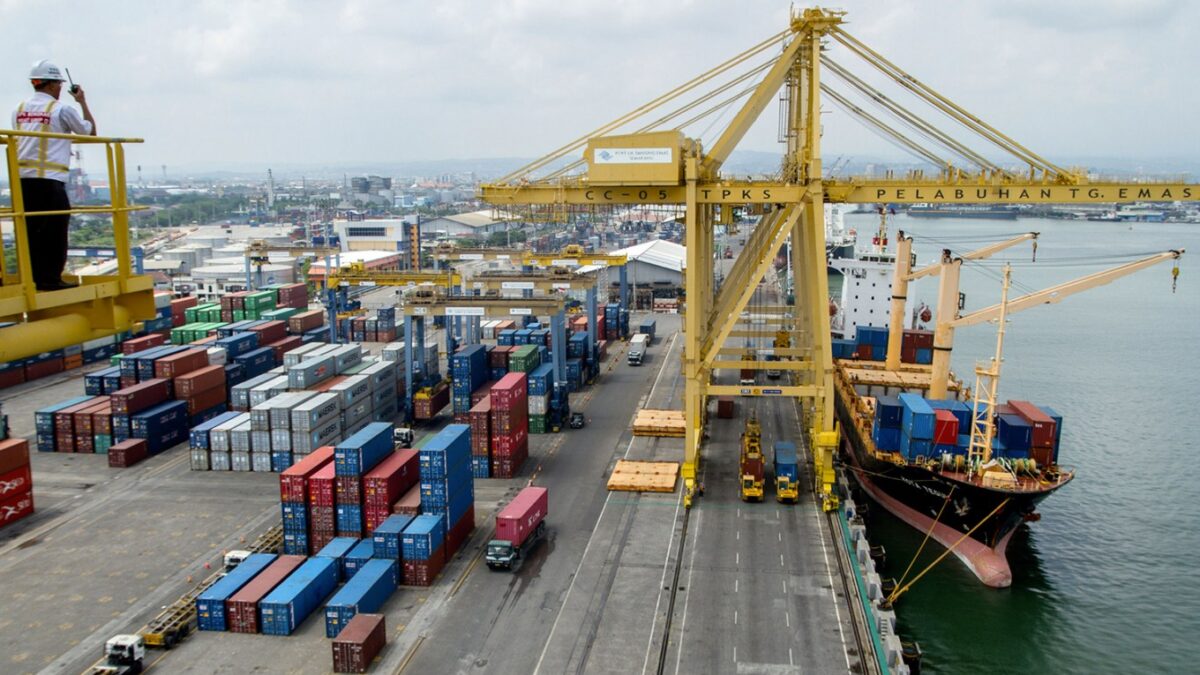JAKARTA – Indonesian imports and exports reached a new peak in March on surging global commodity prices fueled by a post-pandemic global economic recovery and the Ukraine war.
Statistics Indonesia (BPS) said on Monday that exports rose 44.36 percent year-on-year (you) to US$26.50 billion, the highest ever since the agency began logging such data in 1993. Surging exports were led by coal, metals and crude palm oil (CPO).
Imports rose 30.85 percent yoy to $21.97 billion led by an increase in raw materials and capital goods, as a result of rising oil prices and rising industry demand as companies expand operations.
“Just like exports, our imports are also at an all-time high in March,” said BPS head Margo Yuwono during a press conference.
As a result, Indonesia’s trade surplus reached a six-month high of $4.53 billion in March, up nearly three fold from the same month last year and marking 23 consecutive months of surplus.
On a month-to-month (mtm) basis, imorts and exports increased 32.02 percent and 29.42 percent, respectively.
Indonesian trade has been breaking records since last year largely because of a commodity price boom, with exports last reaching a record high of $22.84 billion in November 2021 and imports $21.35 billion in December 2021.
The global surge in commodity prices is expected to have a net positive impact on Indonesia’s trade, as rising prices of exported commodities like coal and CPO outweigh rising prices of imported goods, particularly crude oil.
“It all depends on whether the war between Russia and Ukraine would be a prolonged one or a quick one, as it could move the price of international commodities,” Margo said.
BPS data shows that rising non-oil and gas exports were led by coal, followed by steel, CPO, nickel, and precious metals. The rise in prie of these commodities were exacerbated by the war between Russia and Ukraine, both of which are major commodity producers.
BPS noted that prices of these commodities were at least at one-year highs with coal at $294.4 ton, nickel at $33,924 per ton and CPO at $1,777 per ton, as of March.
Non-oil and gas imports were led by electronics, machinery, steel, plastic products and auto parts.
Oil prices have risen 78.74 percent yoy to $113.5 per ton as of March, according to BPS.
Center of Economic and Law Studies (CELIOS) director Bhima Yudhistira said the recent easing of mobility curbs in South Korea helped boost Indonesia exports, which rose 76 percent yoy in the first quarter of 2022.
He added that the latest figures showed that Indonesia’s exports were unaffected by the recent COVID-19 lockdowns in China.
China remains Indonesia’s main export destination with $5.48 billion worth of non-oil and gas exports. India and the United States trail behind with $2.83 billion and $2.06 billion, respectively.
Indonesia logged a trade surplus with India at $2 billion and with the US at $1.2 billion as of March, BPS data shows.
“The trend of rebounding exports will continue in the second quarter of 2022,” he said.
However, Bhima outlined three risks for Indonesian export volumes going forward, namely rising raw material prices, interest rate hikes and supply chain snags.
High raw material prices could make Indonesian manufactured goods uncompetitive, higher interest rates could make it harder for exports to expand operations and lingering supply chain snags in several countries could disrupt the flow of goods, he said.
Bank Indonesia (BI) held its benchmark interest rate at a record low 3.5 percent in March as domestic inflation remained low. But economists say that the central bank might raise rates soon in response to rising domestic prices and monetary tightening in the US.

